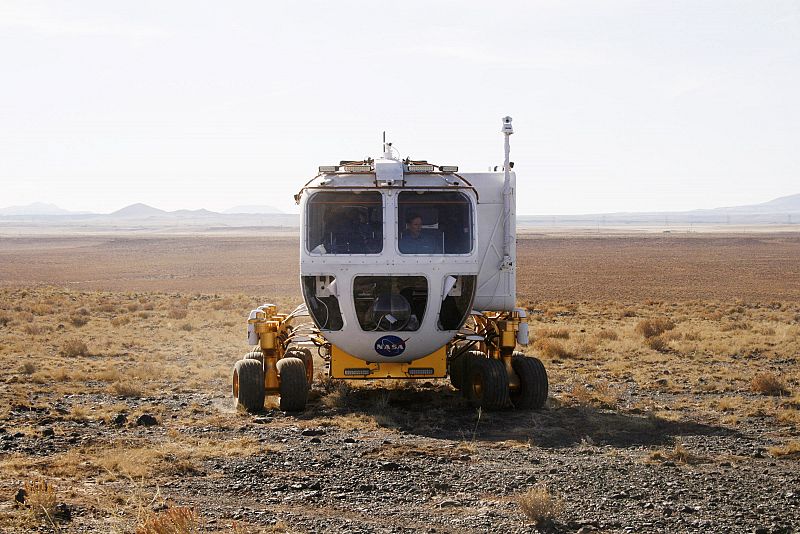Nuevo vehículo lunar de la NASA
Nuevo vehículo lunar de la NASA
-

New lunar rover vehicle that U.S. space agency NASA is testing in Black Point, Arizona
25.10.2008A new lunar rover vehicle that U.S. space agency NASA is testing goes through its paces in Black Point, Arizona, October 24, 2008. The Small Pressurized Rover Concept vehicle is designed to carry two astronauts without space suits, sitting in a pressurized compartment, when NASA returns to lunar exploration by 2020. The vehicle is being tested in a remote corner of Arizona with similar surface conditions to those found on the moon. It has a range of up to 625 miles (1,000 km). REUTERS/Tim Gaynor (UNITED STATES)REUTERS/Tim Gaynor -

Journalists look at a new lunar rover vehicle that U.S. space agency NASA is testing in Black Point, Arizona
25.10.2008Journalists look at a new lunar rover vehicle that U.S. space agency NASA is testing in Black Point, Arizona, October 24, 2008. The Small Pressurized Rover Concept vehicle is designed to carry two astronauts without space suits, sitting in a pressurized compartment, when NASA returns to lunar exploration by 2020. The vehicle is being tested in a remote corner of Arizona with similar surface conditions to those found on the moon. It has a range of up to 625 miles (1,000 km). REUTERS/Tim Gaynor (UNITED STATES)GAC/AT -

A photographer stands next to a new lunar rover vehicle that U.S. space agency NASA is testing in Black Point, Arizona
25.10.2008A photographer stands next to a new lunar rover vehicle that U.S. space agency NASA is testing in Black Point, Arizona, October 24, 2008. The Small Pressurized Rover Concept vehicle is designed to carry two astronauts without space suits, sitting in a pressurized compartment, when NASA returns to lunar exploration by 2020. The vehicle is being tested in a remote corner of Arizona with similar surface conditions to those found on the moon. It has a range of up to 625 miles (1,000 km). REUTERS/Tim Gaynor (UNITED STATES)REUTERS/Tim Gaynor
Últimas fotogalerías Noticias
Ver más















